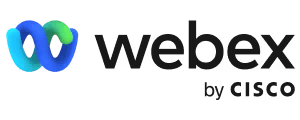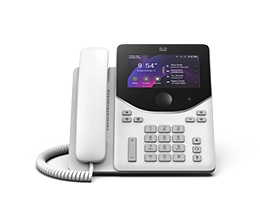Workforce optimization (WFO) is a strategy in contact centers that involves integrating technologies and processes to improve the efficiency and effectiveness of the workforce. WFO solutions can include workforce workforce management (scheduling, staffing), quality monitoring, training and coaching tools, performance management, and analytics to ensure that the right agents are available at the right times, delivering high-quality service.
Optimizing agent performance is critical for delivering excellent customer service — which reflects on the entire business. But what does an ideal WFO strategy look like in a contact or call center environment? What products make up an effective WFO suite? This is everything you need to know about WFO for contact centers.
The importance of WFO in contact and call centers
A recent study from Metrigy showed an increase in agent turnover between 2022 and 2023 — from 21.8% to 28.1%. Unfortunately, that percentage is expected to increase again in 2024 to 31.2%.
The reasons for such high turnover are many, and these numbers in , in particular,lude agents who have been laid off and those who have left by choice. But even with that in mind, a rising turnover rate is bad news no matter how you look at it — and over 30% is high, considering a “normal” rate sits around 10-15%, according to the same study.
So, how do contact centers stand to benefit from reducing turnover through effective workforce optimization?
More efficient resource utilization
It’s not unusual for contact centers to deal with fluctuating demand — whether on a day-to-day basis or month-to-month. Workforce optimization enables them to forecast and schedule the right number of agents with the appropriate skills to handle incoming calls efficiently. This ensures that resources are utilized in the best possible ways, which helps you meet staffing needs to avoid over- or under-allocating agents.
Enhanced customer experience (CX)
Customer experience is a top priority for contact centers. When agents are burnt out or can’t find the information they need quickly and efficiently to address tough customer queries, CX suffers.
WFO practices such as workforce management (WFM) and performance management help ensure that agents deliver consistent, high-quality service as much as possible. By monitoring interactions, providing feedback, and offering training, WFO helps improve agent performance and, consequently, enhances the overall customer experience throughout the organization.
Improved operational efficiency
Workforce optimization involves streamlining processes, automating tasks, and leveraging technology to improve operational efficiency across many important key contact center performance indicators (KPIs). Using the right workforce management tools, contact centers can reduce handle times, increase first-call resolution rates, and improve overall productivity.
Better employee and customer engagement
Many WFO practices, such as training and development programs and performance management, help contribute to heightened employee engagement and satisfaction. In fact, studies show the correlation between employee experience (EX) and customer experience is strong. Empowerment and enablement from contact center managers, as well as agents being rewarded for good work, help drive positive CX outcomes.
What’s the difference between WFO and workforce management (WFM)?
The answer here is simple but it’s an important distinction to make since the terms are often confused with each other.
Call center workforce management focuses specifically on the operational aspects of managing employees, including scheduling, staffing, forecasting, and time tracking. Contact center WFM is a function of WFO that, in the simplest terms, ensures that the right people are in the right places at the right times performing the right tasks.
In practice, WFM is a core aspect of an organization’s larger WFO strategy, which integrates performance management, training, employee engagement, quality assurance, and analytics to enhance overall workforce effectiveness.
Initial steps to take before building or implementing a call center WFO strategy
While modern platforms make it easier than ever to empower your agents, there are some initial steps contact center managers can take to prime their business and workforce for positive change:
Assess your current processes
What’s the current state of your contact center's workforce management, quality management, performance management, and training processes? Identify current strengths and weaknesses across your organization so you can know where to focus your efforts.
Set clear objectives
Objectives should align with the overall goals of your contact center, such as improving customer satisfaction, increasing efficiency, or reducing costs. Use a SMART (Specific, Measurable, Achievable, Relevant, and Time-bound) approach to highlight specific, actionable goals that are easier to track progress on. Ask questions like the following to help you choose which goals are most important for your organization:
S: What specific areas of workforce performance need improvement (e.g., call handling times, first call resolution rates, agent adherence)?
M: What data will we use to track improvements in agent engagement and job satisfaction?
A: What constraints (e.g., technology, training, staffing) need to be put in place to streamline operations?
R: Which optimization efforts will have the greatest impact on key outcomes like customer retention or net promoter scores?
T: When do we expect to see measurable improvements in workforce efficiency from newly implemented strategies or technologies?
Invest in technology
Perhaps the largest and most important piece of advice is to invest in technology solutions that can automate and streamline the most critical aspects of your contact center. Armed with tools for workforce management, quality monitoring, performance tracking, and more, you can better support agents. If you can get everything on one platform, even better!
Empower agents early
Empower agents to take ownership of their performance and provide input into WFO processes. Involve them in goal-setting, performance reviews, and process improvement initiatives across the organization, as they know best about which aspects of their job could benefit from more support.
Core aspects of effective WFO for contact centers — and how a purpose-built platform can help
When choosing your dedicated platform to optimize your workforce, it should offer features and functionality that address the core components of a solid WFO strategy.
Workforce management
To effectively manage a workforce of contact center agents, you need tools for forecasting contact volumes of all types — such as calls, emails, and chats — so that you can schedule the appropriate number of agents to handle them efficiently.
Quality monitoring
In a contact center, having a robust set of quality standards ensures agents meet or exceed expectations when commuting with callers (or texters or emailers). But beyond that, your WFO platform needs a feature set that enables you to collect quality data to evaluate interactions between agents and customers, focusing on touchpoints, interactions, and engagements such as:
Call recordings and transcriptions: Analyzing these helps identify patterns in successful interactions versus those needing improvement, allowing for targeted coaching.
Sentiment analysis: Using AI tools to analyze the emotional tone of customer interactions can highlight areas of improvement in service quality.
Customer feedback and satisfaction scores (CSAT): Direct feedback from customers through post-call surveys or net promoter scores (NPS) offers insights into the perceived quality of service.
Performance management
Tracking and analyzing KPIs is tough to do manually. With the right contact center software solution, you’ll be able to assess the performance of individual agents, teams, and the contact center as a whole entity, enabling you to tweak targets or strategies as you progress to achieve goals.
Analytics
Advanced analytics techniques can extract valuable insights from customer interactions, which you can use to:
Improve business processes: Deep insights into operational data can reveal inefficiencies and bottlenecks in workflows. By analyzing key metrics, businesses can streamline processes, optimize staffing levels, and even refine agent scripts or procedures.
Proactively Identify emerging issues: Advanced analytics tools, particularly those that use AI, can detect patterns and anomalies in data that may indicate potential problems before they escalate. For example, sentiment analysis of customer interactions can reveal a growing dissatisfaction trend, which gives you all the information you need to intervene.
Maximize agent productivity: By understanding which agents excel and which need additional support, managers can tailor coaching and training efforts more effectively.
Training and development
Effective workforce optimization also involves investing in training and development programs to enhance the skills and knowledge of contact center agents. Continuous training not only helps agents stay updated on product knowledge, communication skills, and best practices but enables them to deliver better service to customers as a result.
Contact center WFO—the Webex way
Take steps towards a more empowered workforce. Webex Contact Center, now powered by artificial intelligence, puts the power back in your agents’ hands so they feel confident delivering the best customer service possible.
Using AI, easily evaluate every agent-customer interaction and gain visibility into sentiment data to reveal actionable insights that can help you improve quality management and boost customer satisfaction.
Use gamification tactics to motivate employees to deliver exceptional services and monitor live agents in real-time to identify behavioral patterns, following up with any necessary training or professional development to help them do their best.
Customer success is contingent on agent success. With Webex Contact Center, get all the tools you need to capture, monitor, evaluate, analyze, engage, and motivate your army of agents. Your customers will thank you for it!










